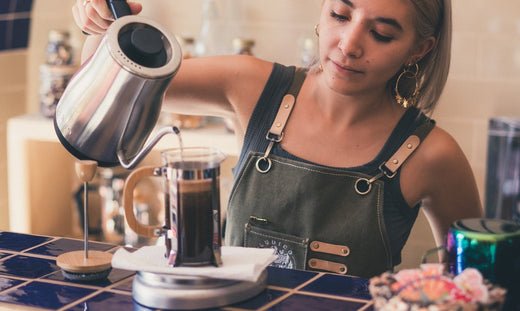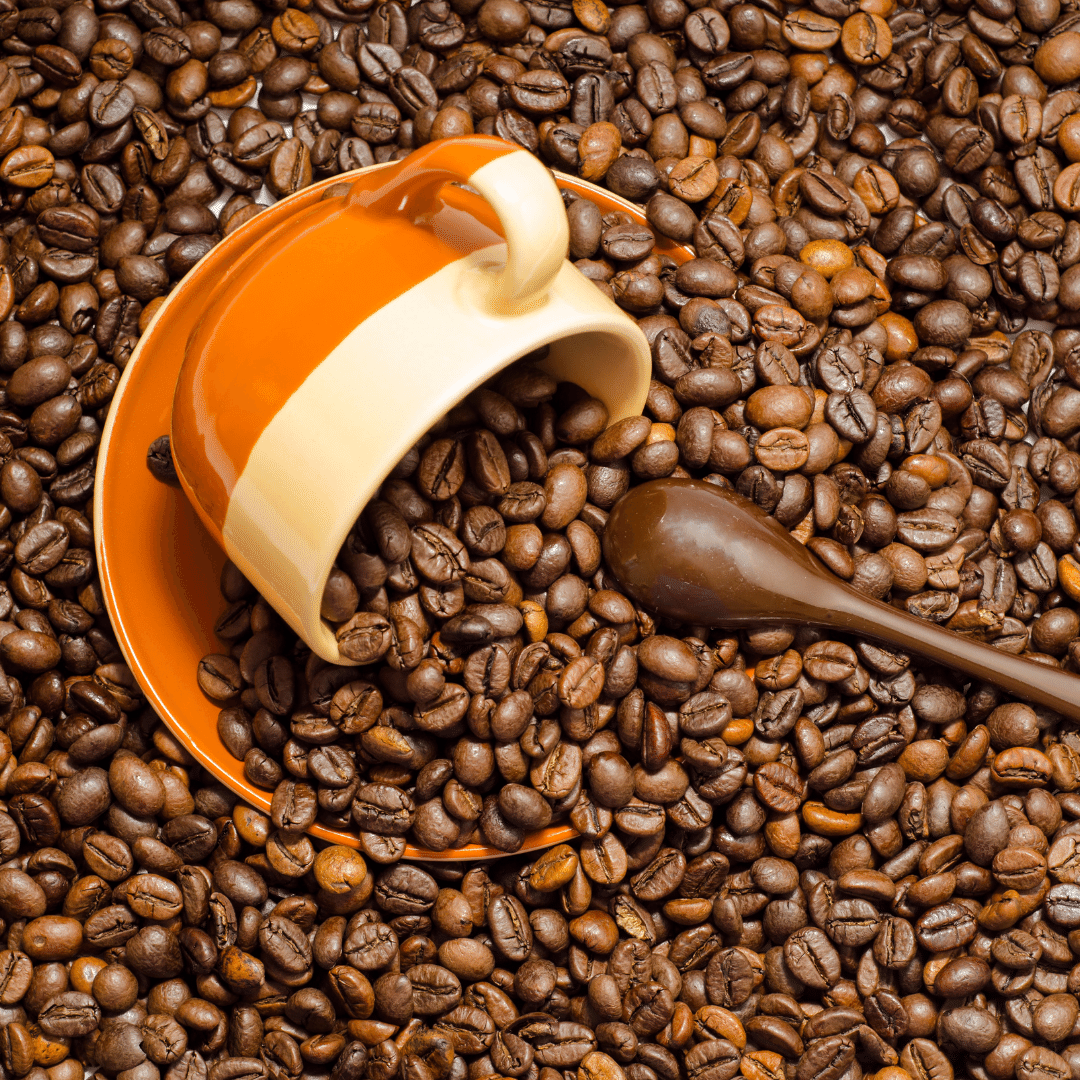While there are countless ways to brew your morning cup of coffee, the French press method is one that often yields the strongest taste. Plus, we can’t deny the fact that it feels like a pretty fancy and, well, French way to enjoy your coffee every day.
If you're a fan of this method of brewing, you might be a bit shocked to learn that not all coffee is created equal; some beans are better suited for brewing via a French press. Follow along as we talk about what the heck French press coffee actually is and how to choose the best coffee for French press brewing so that you'll be able to enjoy a perfect cup every time.
What is French Press Coffee?
Let’s start off by first dissecting what the French press is. It’s essentially a chamber that has a double-wall steel vessel inside, that helps to create a vacuum effect. That vacuum effect, when you push the top down, pushes the grounds into the espresso machine via the force of gravity. The wet coffee grounds stay in the bottom and your coffee is at the top for you to pour out!
Because there is no filter involved, you’re squeezing out nearly every bit of flavor possible, giving you a more robust and fuller flavor with every pour. This means that if you drink coffee for the flavor, a brewing method such as using a French press, a Moka pot, or an AeroPress will help ensure you’re getting the maximum flavor.
As is the case with all types of brewing methods (if you’re really into coffee or just feel like playing around with flavors), you’ll want to be mindful of how you grind your coffee for a French press and also the amount of coffee grounds you’re using for each cup.
Colombian coffee tends to be stronger and, quite honestly, better if you purchase it straight from the source. However, if you’re using a regular coffee brand and want to brew it using the French press method, we suggest starting with 1.5 tablespoons per cup.
What are the Other Different Brewing Methods?
Again, there are numerous methods for brewing a tasty cup of coffee. What’s the “best” method depends on your taste preferences and the amount of time you have each morning or afternoon to invest in brewing.
The drip coffee maker is probably the most popular in most parts of the world. And, while the convenience is great (simply program it to turn on at a set time each morning and it’s already good to go once you wake up), you’re pretty restricted to the machine’s pre-set configurations.
Single-serve capsule coffee makers are even easier. You pop the capsule in, add some water, and press the button. With these types of coffee makers, you’re able to buy quite a few different types of coffee, including capsules with flavors and milk to make concoctions such as vanilla cappuccinos or chai tea lattes.
The Chemex method, while popular in cafes but a bit complicated if you’re making coffee at home, involves placing hot water, coffee, and a floating paper disk in a filter-like vessel. You then hold the cup in one hand and swirl the container until the hot water drips through the paper filter. It’s similar to a pour-over or a drip coffee maker but yields a richer taste.
So, as you can see, the French press brewing method is a happy medium between standard drip coffee makers and something a bit more complicated like a Chemex. And, as an added plus, you never have to buy filters!
What to Look for in Good Coffee for French Press
There's more to coffee than a perfectly roast bean. However, the roasting process does play a big role in the overall flavor of each type of coffee. This process usually starts with mechanization, in which the bean is mechanically processed from the plant to the cup.
It’s important to note that this isn’t the case in places like Colombia where the land doesn’t allow for the introduction of heavy machinery. No, no. Workers head out into the thick of their coffee farms daily to collect coffee beans from each plant by hand. This is one of the reasons why Colombian coffee is such a hot commodity; they really do pick and process it with care.
Now, in most cases, when a bean is in the roaster, it undergoes numerous transformations that form the beans we consume into "good" or "bad" coffee. The end goal of this process is to purify the coffee's flavor and reduce its acidity. The first step in mechanization is to remove a specific amount of the coffee's outer, brown layer.
Not interested in the specifics? We’ve got you covered.
The best coffee for French press brewing is usually a medium or dark roast. Check out our article on The Best Coffee for Cold Brew to learn more about the differences between light, medium, and dark roasts if you’re unfamiliar with them. The main thing to know is that medium or dark-roasted beans tend to retain the most oils and, therefore, are often some of the best coffee beans for a French press because they’ll yield the most flavorful brews.
If you’re looking for a consistent cup of coffee with clear, distinguished flavors, we always recommend opting for a single-origin Colombian coffee. Colombian coffee, as mentioned above, is hand-selected, hand-roasted, and shade-grown in most cases. Shade-grown beans conserve more of their flavors because the sun doesn’t dry the bean out.
As an added plus, most smaller Colombian coffee brands are also pretty eco-friendly; it’s not hard to find coffee brands from Colombia that are organic or that don’t use pesticides to grow their plants. In fact, one trip to the Colombian coffee region and you’ll see just how green and natural the entire process is (but that’s a story for another day).
How to Make the Best French Press Coffee
Want to make the best French press coffee with the best coffee beans? Before you start adding ingredients to the French press, you'll want to make sure your water is at the right temperature.
According to Eric Grimshaw, barista and founder of The Coffee Dive, the temperature you should be looking for is 212 degrees Fahrenheit or over. Next, you'll need to choose the type of coffee you'd like to use in your French Press. As Grimshaw told Elite Daily, "Most coffees, when cooked and brewed, will open up with a lot of froth [similar to milk].” However, he noted that not all coffees are created equal.
Choose a single-origin coffee to start with, and opt for a medium or dark-roasted bean. Try a few different coffee brands to see which one you prefer. Then, play around with the amount of time that you let the coffee and water steep for before you push the handle down. We recommend starting at about three minutes, but you can go as long as six to seven minutes to see if you prefer the flavor like that as well.
Browse Our Coffee for French Press Brewing
Of all the ways to make coffee, the French press method offers the most flavor for the least amount of work (at least that’s what we think, and our coffee habits are pretty advanced due to the fact that, well, it’s our specialty).
In our experience, beans that are brewed in a French press tend to be richer in flavor than when they’re brewed using other methods. Don’t believe us? Browse through our selection of Colombian Coffee Beans and find one that sparks your interest. Then, try brewing it using a French press, and let us know how it goes!



